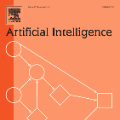As the range of potential uses for Artificial Intelligence (AI), in particular machine learning (ML), has increased, so has awareness of the associated ethical issues. This increased awareness has led to the realisation that existing legislation and regulation provides insufficient protection to individuals, groups, society, and the environment from AI harms. In response to this realisation, there has been a proliferation of principle-based ethics codes, guidelines and frameworks. However, it has become increasingly clear that a significant gap exists between the theory of AI ethics principles and the practical design of AI systems. In previous work, we analysed whether it is possible to close this gap between the what and the how of AI ethics through the use of tools and methods designed to help AI developers, engineers, and designers translate principles into practice. We concluded that this method of closure is currently ineffective as almost all existing translational tools and methods are either too flexible (and thus vulnerable to ethics washing) or too strict (unresponsive to context). This raised the question: if, even with technical guidance, AI ethics is challenging to embed in the process of algorithmic design, is the entire pro-ethical design endeavour rendered futile? And, if no, then how can AI ethics be made useful for AI practitioners? This is the question we seek to address here by exploring why principles and technical translational tools are still needed even if they are limited, and how these limitations can be potentially overcome by providing theoretical grounding of a concept that has been termed Ethics as a Service.
翻译:随着人工智能(AI)的潜在用途范围的扩大,特别是机器学习(ML),对相关伦理问题的认识也随之增加,因此,人们对于相关伦理问题的认识也有所增加;由于认识的提高,人们认识到,现有立法和法规没有为个人、群体、社会和环境提供足够的保护,使其免受AI的伤害;由于实现这一点,基于原则的道德准则、准则和框架已经扩散。然而,越来越明显的是,AI道德原则理论与AI系统的实际设计之间存在巨大差距。在以往的工作中,我们分析是否有可能通过使用旨在帮助AI开发者、工程师和设计者将原则转化为实践的工具和方法来弥合AI道德规范的哪些内容与如何之间的差距。我们的结论是,由于几乎所有现有的翻译工具和方法要么过于灵活(因而容易受到道德洗涤),要么过于严格(对背景反应不灵敏 ), 这就提出了这样一个问题:即使有了技术指导,AI道德准则在算术设计过程中是否具有挑战性,但整个支持伦理伦理设计的努力是否已经变得徒劳?如果说我们在这方面没有多少技术伦理学概念,那么我们又如何去探索AI的伦理限制呢。





